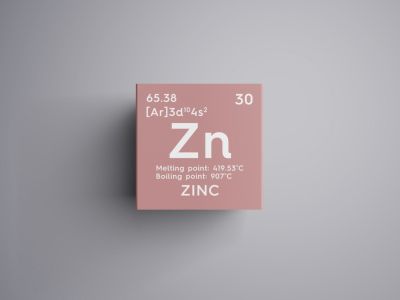Zinc and Plant Growth
The function of zinc is to help the plant produce chlorophyll. Leaves discolor when the soil is deficient in zinc and plant growth is stunted. Zinc deficiency causes a type of leaf discoloration called chlorosis, which causes the tissue between the veins to turn yellow while the veins remain green. Chlorosis in zinc deficiency usually affects the base of the leaf near the stem. Chlorosis appears on the lower leaves first, and then gradually moves up the plant. In severe cases, the upper leaves become chlorotic and the lower leaves turn brown or purple and die. When plants show symptoms this severe, it’s best to pull them up and treat the soil before replanting.
Zinc Deficiency in Plants
It’s hard to tell the difference between zinc deficiency and other trace element or micronutrient deficiencies by looking at the plant because they all have similar symptoms. The main difference is that chlorosis due to zinc deficiency begins on the lower leaves, while chlorosis due to a shortage of iron, manganese, or molybdenum begins on the upper leaves. The only way to confirm your suspicion of a zinc deficiency is to have your soil tested. Your cooperative extension agent can tell you how to collect a soil sample and where to send it for testing. While you wait for the results of a soil test you can try a quick fix. Spray the plant with kelp extract or a micro-nutrient foliar spray that contains zinc. Don’t worry about an overdose. Plants tolerate high levels and you’ll never see the effects of too much zinc. Foliar sprays provide zinc for plants where it is needed most and the rate at which they recover is amazing. Foliar sprays fix the problem for the plant but they don’t fix the problem in the soil. The results of your soil test will give specific recommendations for amending the soil based on the zinc levels and the construction of your soil. This usually includes working chelated zinc into the soil. In addition to adding zinc to the soil, you should add compost or other organic matter to sandy soil to help the soil manage zinc better. Cut back on high-phosphorus fertilizers because they reduce the amount of zinc available to the plants. The symptoms of zinc deficiency are alarming, but if you catch it early the problem is easy to fix. Once you amend the soil, it will have enough zinc to grow healthy plants for years to come.
